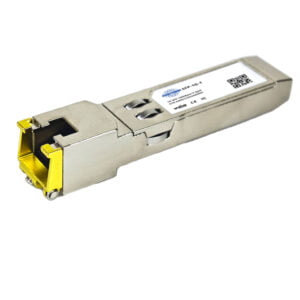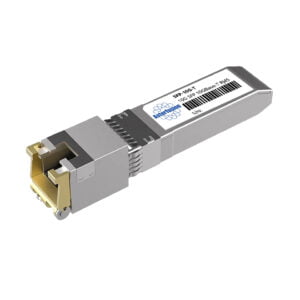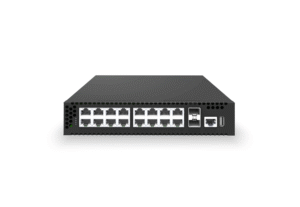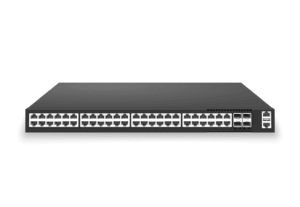Buying Guide of Ethernet cable: Cat5, Cat5e, Cat6, Cat6a, Cat7, and Cat8
written by Asterfuison
Table of Contents
If you work in the field of network communication, it’s important to be familiar with Ethernet cables. There are several common types of cables, including Cat5, Cat5e, Cat6, Cat6a, Cat7, and Cat8. While these cables may look similar, they have some differences in their characteristics. This article aims to provide you with a comprehensive introduction to the various types of network cables and their distinctions, making it easier for you to make the right choice when it comes to wiring.
What are Ethernet Cables?

Ethernet cables are high-quality networking cables used to establish physical connections between devices in homes and offices. Ethernet offers fast and consistent data transfer speeds, meaning that if you connect your cable modem and laptop with an Ethernet cable, you can expect fewer dropped connections and faster download speeds while browsing the web. Although the popularity of WiFi has reduced the usage of Ethernet cables in residential settings, they are still extensively used in environments such as data centers, where servers and network equipment need to be interconnected. Due to the added security of transmitting data over Ethernet cables compared to WiFi, financial services firms often rely on Ethernet in their office setups.
Benefits of using Ethernet cables
The advantages of using Ethernet cables are manifold. Despite the widespread use of WiFi and the various benefits it offers, Ethernet stands out as the preferred mode of connection. When it comes to data transmission, there are two main methods: wired and wireless. Wired transmission can be further categorized into network cables and fiber optic cables, both of which have long been associated with high speed, stability, and reliability.
Demand for speed
One of the primary reasons to opt for Ethernet is the demand for speed. Ethernet provides incredible speeds of up to 10 Gigabits per second, surpassing those of WiFi. While some argue that WiFi 6 can outperform Ethernet, this claim is largely theoretical. Most WiFi 6 products may boast speeds of 1200M or even 2400M, but in reality, even when tested near the router, the actual speed rarely exceeds 800Mbps. The true speed of Ethernet is thanks to its freedom from radio wave interference, unlike WiFi.
Security
Security is another area where Ethernet excels. Although WiFi offers encryption such as Advanced Encryption Standard (AES), Ethernet connections are inherently more secure. With WiFi, hackers can infiltrate your network from a distance, but with Ethernet, they would need physical interfere with the cable, making it easier to detect any interference attempts.
Network Reliability
Whilst it may take time to set up multiple Ethernet cables nicely, you can’t deny their reliability afterwards. This is in stark contrast to WiFi, which can suddenly experience interference and disrupt the continuity of work or you’re enjoying watching a video at home and the wifi suddenly cuts out!
Saving power
Saving power is yet another benefit of Ethernet. Using physical cables like Ethernet consumes far less energy than wireless connections, resulting in potential savings on your electricity bill.
Types of Ethernet cables – CAT5, CAT5E, CAT6, CAT6A, CAT7 and CAT8
Types of Ethernet cables such as CAT5, CAT5E, CAT6, CAT6A, CAT7, and CAT8 can be easily found when you search for them. They are always labeled with a version number, like Cat5, Cat6, Cat7, and so on.When discussing the different types of Ethernet cables available, it is important to start with Cat5 cables. Anything before Cat5 (Cat1 – Cat4) is now considered obsolete or not recommended for home or office use. Generally, the higher the cat number, the faster the Ethernet cable can support. Therefore, let’s begin with Cat5.
Understanding CAT5:
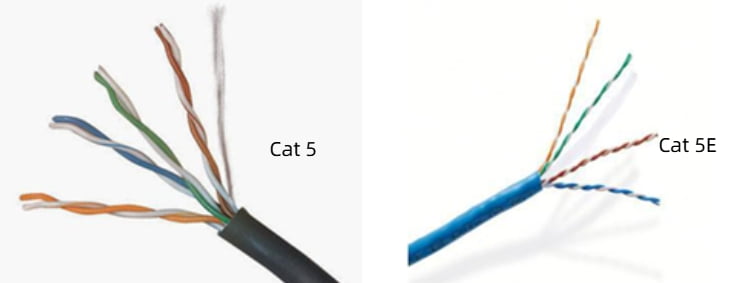
What is CAT5?
Cat5 Ethernet cable introduced the speed of 10/100 Mbps to Ethernet connections. This means that the cable is capable of supporting either 10 Mbps or 100 Mbps speeds. The 100 Mbps speed is also known as Fast Ethernet, and Cat5 cable was the first to support this. Cat5 network cable is made up of four pairs of copper twisted wires, terminated with RJ45 crystal plugs, and has a bandwidth of 100MHz.
Application scenarios of CAT5:
Cat5 network cable has been the preferred choice for home networks for many years. You can find it used on routers and computer hosts. In addition to Ethernet data, Cat5 Ethernet cable can also transmit telephone signals and video.
Understanding CAT5E:
What is CAT5E:
Cat5e Ethernet cable is an enhanced version of the Cat5 cable. The “e” in Cat5e stands for “enhanced.” It can handle a maximum bandwidth of 100 MHz and is optimized to reduce crosstalk or unwanted signal transmission between data channels. While both Cat5 and Cat5e Ethernet cables contain four twisted pairs, Cat5 uses only two pairs for Fast Ethernet, while Cat5e uses all four, enabling Gigabit Ethernet speeds. Cat5e cables are backward compatible with Cat5 cables and have been widely used to replace Cat5 in new installations.
Application scenarios of CAT5E:
Cat5e Ethernet cables have been the preferred choice for home networks for many years, just like Cat5. They are commonly found on routers and computer hosts. Besides Ethernet data, Cat5e Ethernet cables can also transmit telephone signals and video.
Understanding of CAT6:

What exactly is CAT6?
Category 6 Ethernet cable, commonly known as Cat6 Ethernet cable, offers faster speeds compared to Cat5e. With a bandwidth that is 2.5 times greater than Cat5 and Cat5e, it can handle up to 250MHz and achieve a transmission speed of 10Gbps. However, it’s important to note that this high-speed function is only possible within a limited length of 55 meters. To enhance durability, Cat6 Ethernet cable utilizes a plastic core that prevents excessive bending. Additionally, it boasts better insulation and thinner wires, resulting in a higher signal-to-noise ratio.
When the category 6 cable is used for Gigabit Ethernet, it can provide a maximum transmission distance of 100m. However, for 10 Gigabit Ethernet, the transmission distance is reduced to a range of 37 to 55 meters. Cat6 Ethernet cable is particularly suitable for environments with significant electromagnetic interference. There are two variants of Cat6 cable: UTP (Unshielded Twisted Pair) and STP (Shielded Twisted Pair). Moreover, it is compatible with both Cat5 and Cat5e cables, allowing for seamless integration in existing setups.
CAT6’s application scenarios:
This cable is designed to meet the networking needs of most homes and is perfectly suited for home offices or small commercial office network environments.
Understanding of CAT6A:
Similar to Cat5 Ethernet cables, Cat6 has undergone an upgrade, resulting in Cat6A. Cat6A surpasses the original Cat6 cable and offers twice the bandwidth. Like its predecessor, Cat6a cables are shielded, but with a denser and less flexible shield material. This enhanced shielding provides increased protection against crosstalk and interference, albeit at the cost of flexibility. Thanks to its large conductor diameter and dense core lay, Cat6a ensures efficient heat dissipation, resistance to external electromagnetic interference, minimal crosstalk between pairs, and a high signal-to-noise ratio. It supports bandwidths up to 500MHz and transmission rates of 10GbpsZ, with a maximum transmission distance of 100m. Category 6a cables typically come in the STP form, necessitating the use of a special connector for grounding.
CAT6A’s application scenarios:
Cat6a finds value in local area networks (LANs) connecting a wide range of devices, including printers, servers, VoIP phones, network media players, routers, modems, and switch boxes, among others.
Understanding of CAT7
What exactly is CAT7?

Category 7 Ethernet cables, also known as Cat7 cables, are the latest and most advanced shielded twisted pair cables available in the ISO Category 7/Class F standard. These cables offer unparalleled attenuation performance when compared to other cables in the same category. With a 600MHz bandwidth, a lightning-fast 10Gbps transmission rate, and a maximum transmission distance of 100m, Cat7 cables are a force to be reckoned with. It’s important to note that their performance comes at a slightly higher price point than Cat6 Ethernet cables, but the benefits more than make up for the difference. For those looking to connect their router directly to their laptop over a short distance, Cat7 cables can achieve a mind-boggling 100Gbps transmission rate within 15 meters and an impressive 40Gbps rate within 50 meters.
One notable difference between Cat6 and Cat7 Ethernet cables is the use of modified GigaGate45 connectors in the latter. However, fear not, as these connectors are fully backward compatible with ordinary Ethernet ports, making the transition seamless.
CAT7’s application scenarios
Not only are Cat7 cables compatible with their predecessors (Cat5, Cat5e, Cat6, and Cat6a), they are also ideal for use on data center with a wide range of network devices. or you want to connect modems, ADSL, Hubs, gaming consoles, or anything in between, Cat7 cables have got you covered.
What about Cat7a?
Cat7a (Enhanced) Ethernet cables hold the distinction of having the best specifications on the market today. While they may not be as widely available as their Cat7 counterparts, they boast an impressive 50% increase in overall bandwidth. However, it’s worth noting that these cables don’t transmit data much faster than typical Cat7 cables. Furthermore, they come with a higher price tag and offer limited compatibility with common networking hardware, making them less widely accessible.
Understanding of CAT8:
What is CAT8?

The newly upgraded Cat8 Ethernet cable, also known as Category 8, is the latest generation of high-speed network cables. It features double shielding and supports frequencies up to 2000MHz, allowing for lightning-fast speeds of up to 40Gbps within a 20-meter range. Cat8 cables are fully backward compatible with previous cable categories, ensuring seamless connectivity across different devices.
To ensure superior performance, Cat8 cables are equipped with aluminum foil insulation and CCAM braid shielding. This provides excellent protection against electromagnetic and radio frequency interference, ensuring a stable and reliable connection. Although Cat8 cables have a slightly shorter transmission distance of 30 meters, they are specifically designed for high-performance 25/40GBASE-T applications.
CAT8’s application scenarios
- Cat8 cables are particularly suitable for data centers, where they can be used to connect servers, switches, patch panels, and other equipment over short distances.
- Their quad-shielding design makes them ideal for heavy-duty use, and they are even weatherproof and UV resistant, making them a popular choice for outdoor or buried connections.
- Telecom companies especially favor Cat8 cables due to their durability and reliability in demanding environments.
Contrast of CAT5、CAT5E、CAT6、CAT6A、CAT7& CAT8
Type | Category 5e | Category 6 | Category 6 A | Category 7/7A | Category 8 |
| Rate | 1000Mbps | 1000Mbps | 10Gbps | 10Gbps | 25Gbps , 40Gbps |
| Maximum distance | 100 metres | 100 metres | 100 metres | 100 metres | 30 metres |
| Frequency | 100 MHz | 250 MHz | 500 MHz | 1000 MHz | 2000 MHz |
| Conductor (pair) | 4 | 4 | 4 | 4 | 2 |
| Cable type | Shielded/Unshielded | Shielded/Unshielded | Shielded/Unshielded | Shielded | Shielded |
| Application | Small Office,Home | Home, Small Business Scenarios | Local area networks (LANs) | Data center High speed & bandwidth intensive applications | Data centres,high bandwidth intensive applications Outdoor or buried connections |
UTP cable VS FTP cable VS STP cable VS SFTP cable VS ASTP cable, what are they and what is the difference?
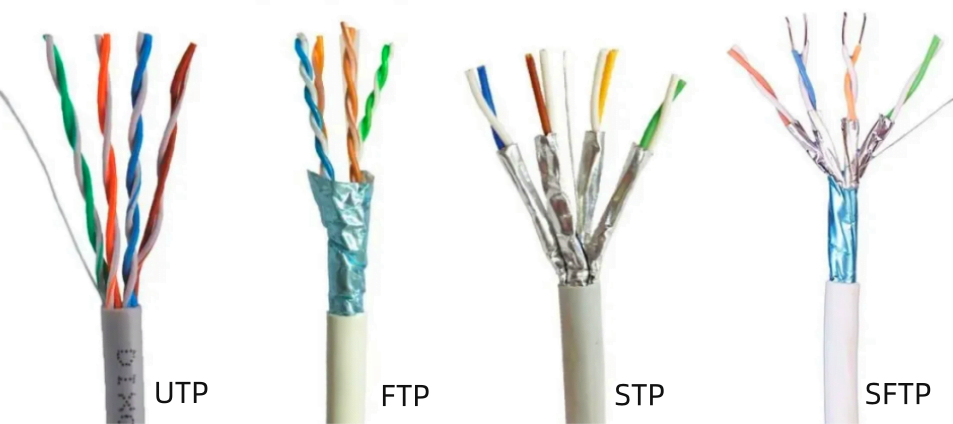
Classified based on the different shielding types, network cables are divided into several categories, namely STP cables, SFTP cables, UTP cables, FTP cables, and ASTP cables.
- Unshielded Twisted Pair (UTP) cable, which is the most common type, does not have any shielding. It is widely used in various networks, especially those with a transmission bandwidth lower than 250MHz and no specific performance requirements. UTP cables are easy to transport, construct, and maintain, as they consist of pairs of wires twisted together, offering reduced electromagnetic interference.
- Shielded Twisted Pair (STP) cables also have twisted wires, which are further encased in a shielding or screening material, such as a foil wrapping or copper braid jacket. This type of cable provides enhanced resistance to interference and effective reduction of signal attenuation, making it suitable for high-speed networks and secure transmissions.
- Foil Twisted Pair (FTP) cables differ slightly, with each twisted pair of wires wrapped in its own foil shielding to protect against EMI and crosstalk.
- Shielded Foil Twisted Pair (S/FTP) cables combine FTP and STP shielding. The individual twisted pairs of wires are shielded with a foil wrapping, and the 4-pair grouping is additionally shielded with either foil or a flexible braided screening. This configuration minimizes external magnetic field interference and internal signal interference. S/FTP cables provide low attenuation and are ideal for professional engineering wiring in complex electromagnetic environments and areas with strong interference. They offer the highest level of protection against EMI and crosstalk.
- Armored Double-Shielded Twisted Pair (ASTP) is a special type of double-shielded network cable with an outer layer of steel belt armor. In addition to providing double shielding, this cable effectively prevents rodents, trampling, pulling, and is explosion-proof. Compared to other network cable types, ASTP cables have slightly higher installation costs and are suitable for integrated wiring in special industrial environments.
How to choose from the right cable for you?
There are various types of network cables to choose from. So how do you make the right choice? Well, as you can see above, network cables come in different varieties and each has its own strengths and differences. With the increasing demand for network performance, the transmission capabilities of these cables are constantly being improved and optimized. However, is it necessary to always go for the latest and greatest network cable?
What really matters is finding the right network cable that suits your specific needs and achieves a cost-effective wiring solution. Let me give you an example: while the latest Category 8 network cable surpasses the older Category 5e cable in terms of transmission bandwidth and speed, it comes with a significantly higher price tag. Pursuing the absolute best might only end up increasing your network wiring costs.
Moreover, within the same IEEE network standard, different types of network cables have varying transmission distances. Let’s take Category 6 and Category 6e cables as an example. Both can be used for 10GBASE-T 10G networks, but the maximum transmission distance for Category 6 is limited to 55m, while Category 6e can reach up to 100m. If you’re looking to create a 10Gbps copper link with a transmission distance exceeding 55m (or even 100m), it’s more advisable to go for Category 6e.
Furthermore, choosing the appropriate shielding type of network cable is crucial depending on your specific application environment. In a home setting with minimal interference, you can opt for UTP or FTP network cables. However, in a computer room environment with a higher level of interference, you should opt for shielded network cables like STP or SFTP, which offer stronger anti-interference capabilities.
In conclusion, the key is to make an informed decision by taking into account the transmission rate, transmission distance, application environment (shielding type), and price. Choosing the right network cable ensures optimal performance and cost-effectiveness for your specific needs!
Q&A
Is Cat8 the Best Ethernet Cable on the market?
When it comes to performance and data transmission speeds, Cat8 is unmatched. While it may have a higher cost compared to other Ethernet cable options, it offers superior freedom from interference and cross-talk. This makes it the perfect choice for data centers, where quick loading and operations on large files are a common requirement. Cat8 is expected to replace older cable versions, such as Cat6 and Cat7, in the future, and it is fully compatible with existing hardware.
May I ask Could I Plug a Cat8 Cable Into a Cat6 Jack?
If you are wondering whether you can plug a Cat8 cable into a Cat6 jack, the answer is yes. However, the performance will be limited by the capabilities of the Cat6 jack. While a Cat8 cable can transmit data at speeds of up to 100 Gbps, a Cat6 jack can only achieve a maximum speed of 10 Gbps.
